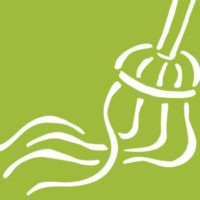Effective Pest Control: The Essentials for Food Processing Plants and Warehouses

Today’s food plant pest control programs should be effective, fully documented and automated. To be effective, they must strictly follow a number of guidelines. These guidelines are being updated by an advisory council to the National Pest Management Association and are currently available.
Documentation programs are essential to analyze or review any trouble areas, service histories and records of all materials used on the premises. Many times, this will be the most important information that third-party auditors will examine.
Automation has hit the pest control industry in a big way. Rodent stations can be checked via portable scanners. All pertinent information can be entered in databases for historical reviews, and customers can view their data in real time over a secured database. This is convenient for quality control directors with multiple locations.
Pest control in the future will continue to be technology driven. Pest tolerances will be stricter. Pest control materials will be less toxic, and because of that, pest control technicians will be more professional.
An effective pest control program will depend on effective technicians. For instance, Dr. Murray Cooper taught me in the 1970s that entering an account from a different door and performing treatment in a counterclockwise (versus clockwise) direction will give the technician a completely different perspective, catching problems that might have been missed otherwise.
Another concept is to look in unexpected areas. Once I asked management for access to the roof of a multi-story candy manufacturing facility. No one had inspected the roof, so access was difficult. Once up there, we discovered hundreds of fecal pigeon samples and inches of toxic droppings. This was an unsanitary and unsafe situation. With other rooftops, there have been massive puddles that support huge housefly and mosquito populations.
Insect Pests
The common housefly is a known carrier of diseases and pathogens, including Listeria and even Salmonella. Houseflies reproduce rapidly; the current school of thought is that one pair of houseflies would have over 500,000 descendants over a 6-year period, though not all would survive. Another common food plant insect is the fruit fly, which reproduces just as quickly.
Flying insect control requires removal of breeding sites, such as the roof puddles mentioned earlier, and food sources. Garbage is a prime source for both food and breeding sites; therefore, dumpsters must be placed away from open doors. All standing water should be eliminated from processing and distribution properties. Keeping flying insects from entering buildings is difficult but essential. Screen doors work on standard doors, but not as well on dock doors. There are alternatives, such as air curtains and strip doors for dock doors. Air curtains are effective but must be monitored to be certain the airflow points outward, as I have seen many mistakenly pointing inward, sucking insects in. Strip doors are also effective if installed and maintained correctly, but too many times, I have seen them tied open to allow a breeze into the facility.
Indoor flying insect control can be achieved with electrocuters, sticky traps or baited flytraps but must be maintained correctly and cleaned periodically. Bulbs must be changed regularly, as most lose their effectiveness after 6 months. Cleaning is essential, as government agencies and auditors frown upon insect fragments and consider them proof that insects exist within facilities.
Insecticide fogging is another alternative but must be performed only by a licensed technician from a reputable pest management firm that is knowledgeable about pest management in food plants.
Another food plant pest is the cockroach, which is known to transmit diseases and bacteria. It is best to know which species you are fighting to know its breeding areas. You can determine the species by placing insect traps around the facility; be certain to map the traps so you can check and collect them all. You can then identify which species you have trapped and battle them accordingly. Be complete with your placement; set traps in electrical junction boxes, behind and beneath equipment, control panels and even floor drains if it can be done safely. Insect evidence is a critical finding in any food manufacturing or distribution facilities.
Rodent Pests
Probably the most notorious pest threatening the food industry is the rodent family. Rodents include rats and mice. They must be controlled in food plants and distribution centers because they damage food containers, contaminating food with rodent droppings and urine, and consuming food. The mouse most often found in our industry is the house mouse; the two most common species of rats are the Norway rat and the roof rat. Most rodents are nocturnal and reproduce rapidly, having 20 to 35 offspring per year.
Signs of rodent infestation include droppings, visual sightings, gnawing sounds, oil marks from their fur, tracks that can be seen in dusty areas with flour, gnawing of insulation and wires and urine stains that are detectable under UV light.
To effectively control rodents, you must eliminate their harborages, such as old pallets and retired equipment. I have even observed rodents living in the cabs of old delivery trucks. Remove all junk and keep the exterior perimeter free of weeds and debris. The next step would be the elimination of food and water sources. Following that, rodent-proof your facility to keep them from coming into the plant or warehouse.
Rodent control should include a combination of tools such as outside baits in secure/tamperproof stations, inside traps and large glue boards. Glue boards will catch rats, mice and the occasional invader such as grasshoppers or crickets. I have always found the “occasional invader” term humorous, personifying the insect as a gadabout of sorts, wandering around inside the facility.
Again, all traps and secure/tamperproof bait boxes should be regularly inspected and maintained. Number them and map them out. The bait placement will probably have to be increased during the winter months if activity increases. Inspecting the grounds for Norway rat burrows is very important. Burrows can be treated with rodenticides or toxic tracking powder, but this is a job for the professional.
Other food processing plant and warehouse pests include stored-product pests such as Indian meal moths and birds. However, treatments for these pests should always be customized. Stored-product pests may require fumigation, and bird control may require restricted materials. Both treatments call for a certified pest control operator.
As you can see, pest control has been and always will be about trained and motivated technicians. To preserve your company’s reputation, know your facility’s pest control program and always keep track of the documentation.
Gary Hugé is vice president of ASI Food Safety Consultants. He can be reached at GHuge@asifood.com.
Looking for a reprint of this article?
From high-res PDFs to custom plaques, order your copy today!








.webp?t=1721343192)